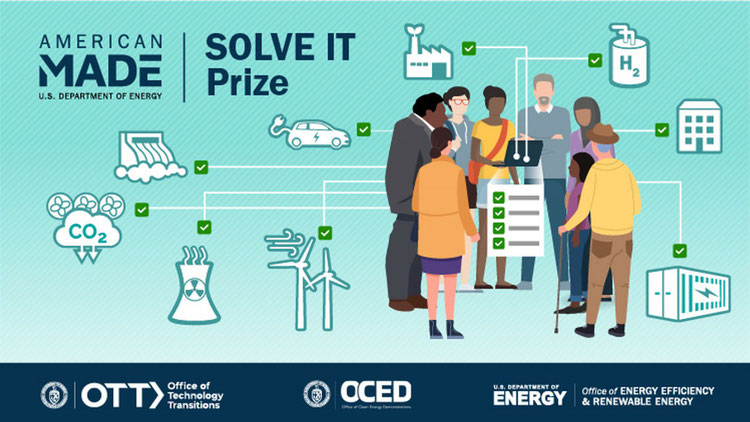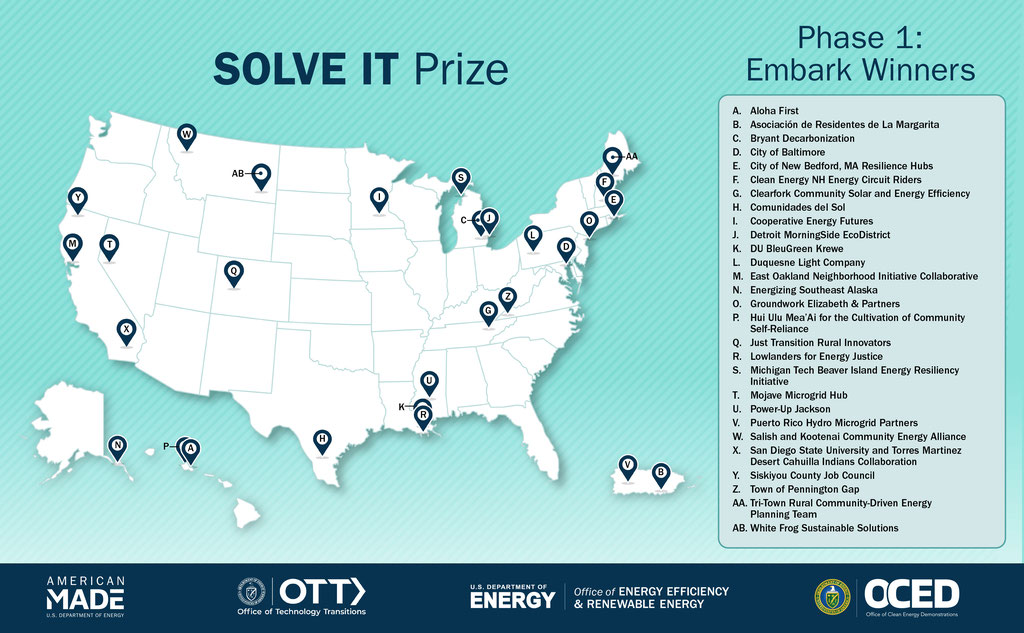Are there specific technologies/companies that would be preferred for deployment that have been a part of the technology research conducted by OTT, OCED, and EERE? Or can the applicant work with a local clean energy startup of their choice?
Teams are welcome to work with whichever companies/startups that make sense for their community clean energy challenges/opportunities. Please refer to pages 8-9 of the prizes rules to confirm technology eligibility.
Are Native Tribes eligible?
Yes.
Should the technology be deployed at homes? Or are commercial applications ok too?
The SOLVE IT prize intends to support clean energy solutions at the neighborhood, town, and city scales. The competitor can determine the best solution for their specific community’s needs.
Do you have to be awarded the first two phases in order to qualify for phase 3?
Yes, only the winners of Phase 1 will advance to Phase 2; only the winners of Phase 2 will advance to Phase 3.
Can the Prize funds be put towards a facility that will be used to carry out the strategy (working with the community stakeholders), purchasing equipment needed for the technology?
Prize funds can be used however the winning team chooses.
How important is the past track record of the applicant?
Phase 1: Embark submissions are scored based on three criteria. Criterion 1 is Experience, which accounts for 40% of the total submission score, and includes an assessment of the competitor’s track record of working with communities.
Is the cash prize used to fund the execution initiative?
Prize funds can be used however the winning team chooses.
Does a technology that reduces energy use qualify? In this instance it is a water sustainability technology focused on precision irrigation in agriculture.
Section 1.4 of the official rules document includes a list of areas of interest for this prize. The SOLVE IT Power Connectors can provide further guidance to individual competitors. Note that identifying a single specific technology is not part of the Phase 1: Embark submission. The prize aims to support communities as they identify and implement innovative solutions in a way that addresses their unique needs and challenges.
Is the identified community to be involved from the Embark phase as partner or not?
The competitor may determine which partners to include in their team; they are not required to include a specific member of the identified community in their Embark submission.
If the team had a funded project that addresses clean energy for a community, can they still submit?
Yes. Teams are encouraged to ensure their SOLVE IT submissions align with the goals of this particular prize. The prize aims to support communities as they identify and implement innovative solutions in a way that addresses their unique needs and challenges.
Would an affordable housing nonprofit that has built a net-zero apt. building qualify if it paired itself with a national laboratory to further develop net-zero construction materials for affordable housing developments in Chicago?
Section 1.3 of the official rules document includes eligibility information, which competitors should use to determine their eligibility. Power Connectors can also engage in discussions about specific competitor situations. Competitors should review the rules document in full to ensure that their submission aligns with the goals of the prize. The prize aims to support communities as they identify and implement innovative solutions in a way that addresses their unique needs and challenges.
Some technologies may be taking off in the market in some places, but would be considered novel in others. For example, residential energy storage is common in CA but uptake is almost nonexistent in NYC. Would projects including these technologies not be considered "innovative," even if they are completely new to our EJ community?
Competitors should demonstrate why this specific project would be innovative. Examples of how a particular solution might be innovative or technically novel include innovative applications of the technology, uniqueness of size or scale, or novel combinations of technologies. Note that competitors are not required to identify a single specific technology at the Embark phase. In later phases, submissions will be assessed on how the proposed project may benefit this particular technology or approach (such as through novel lessons learned, replicability, etc.).
Can we tie the project into a future larger FOA scenario, particularly alternative fueling station development funding associated to creating fueling network to support mid-HD class refueling operations, pending this technology supports both securing those assets as well as providing security of GHG reductions?
Competitors are encouraged to consider future opportunities to continue to build upon the projects they are initiating due to the SOLVE IT prize, so long as their submissions align with SOLVE IT’s goals and criteria for that phase of the competition. The SOLVE IT prize team is not able to advise individual prize competitors; competitors may discuss their specific eligibility for SOLVE IT with Power Connectors.
Are these details for the weighted scores available?
Yes, Section 3.6 of the official rules document describes the Phase 1: Embark assessment criteria and their associated weights.
Is there a page limit or word limit? Is there a specific font requirement?
There is no page limit, only a word limit. The Phase 1 submission narrative must not exceed 2,000 words. There is no font requirement other than ensuring the narrative is clear and readable.
Does this have to be a new project or can one use an existing project?
The competitor can choose a new or existing project. Note that in Phase 2: Engage submissions, competitors should describe the different technology solutions considered and feedback from communities on these varied solutions. Teams are encouraged to ensure their projects align with the prize goals. The prize aims to support communities as they identify and implement innovative solutions in a way that addresses their unique needs and challenges.
Is a single enterprise considered eligible to apply?
See Section 1.3 of the rules for eligibility. In Phase 1, a team can include a single organization or individual.
Can you describe how you would define a "binding commitment" for a project in Phase 3?
Section 5.5.5 of the official rules document describes this in further depth, including examples. A binding commitment should demonstrate firm commitment to carrying out a technically novel clean energy project in the near-term. Submitted commitments should be demonstrated through the strongest possible documentation that the competitor can provide.
Ideally how many people are on a team?
There are no requirements for the number of members on a team. However, DOE expects that the partnering team will increase in size in Phases 2 and 3 as support grows.
Are there any specific projects that the prize is looking for?
Section 1.4 of the prize rules list the particular areas of interest for DOE.
I understand that Phases 1-3 will span 2024/2025. Will there be another iteration of the SOLVE IT Prize that will span 2025/2026?
At this time there is no formal announcement regarding another iteration of the SOLVE IT Prize. However, competitors are encouraged to follow www.americanmadechallenges.org as new prize opportunities are made available regularly.
Can we have a short phone call to discuss the fit of our project?
Competitors are encouraged to reach out to Power Connectors for free discussion of projects, eligibility, and fit.
To clarify, Phase 2 winners need to conduct robust community engagement to inform a credible plan toward a specific novel clean energy project, and then they get $500K to carry out that plan? So, we should be submitting ideas for projects that can be achieved with $500K? (May limit the size of the project to a single building rather than a community program.)
$500k does not need to be the limit of budget and scope for the project. The prize awards are meant to support community initiatives as they progress and garner further support in whatever way makes most sense for that community and their challenges/opportunities.
In the case of an Academic Institution, considering the campus as the community, the team can be composed of different units within the university or the team needs to involve other eligible entities not affiliated to the institution?
It is up to the competitor to define their community and their team, and any team members’ or partners’ connections to that community.
If you have been a competitor on other prizes (including whether or not you received a prize) does that have any weight in the selection process?
No. However competitors are encouraged to ensure their SOLVE IT Prize submissions align with the stated goals of this prize competition. Details on how submissions are scored and assessed, as well as other factors that DOE may consider as part of the selection process, are included in the rules.
Can "community" be defined to mean a single multifamily building in a dense urban environment?
The target community may be defined by the competitor.
Can we work with multiple communities with this Prize?
Competitors may make one submission as the team lead, but may participate as part of the team on multiple submissions Part of the submission narrative for Phase 1: Embark is to “clearly define the community you are focusing on and describe your relationship to that community”.
Should the submission be technology based or a program/initiative?
SOLVE IT looks to award competitors who will work collaboratively with stakeholders interested in community-scale clean energy strategic planning to engage their communities, build a network of support for clean energy or decarbonization projects, and develop plans for carrying these projects out. The prize is not intended to award R&D for specific technologies and one of its aims is to promote the commercialization of promising energy technologies.
Can you give example impact measures that will distinguish proposals (given broad range of tech...)
The criteria that will be used to assess the impact of the proposed energy projects are described in section 5.6 (page 20) of the rules document, which also provides examples of impact. These include providing economic, health, environmental, or other benefits to the community and first-of-a-kind application, replicability, or novel lessons learned for the technology.
So, prize funds don't fall under any 2 CFR 200 regulations?
Correct. Prizes are not considered a procurement under the Federal Acquisitions Regulations and will not result in a grant or cooperative agreement under 2 CFR 200.
Can you give some examples of strategic communities suitable for the program?
Disadvantaged, underserved, or overburdened communities are of particular interest for this prize. See Section 1.4 of the official rules document for further description of these communities.
Can the solution be an existing designed Leed platinum structure for use within a community that is seeking funding to be built?
Competitors are encouraged to share their project ideas with Power Connectors for further discussion, as the Prize Administration Team cannot weigh in on project specifics.
What does community-scale like neighborhood entail? Such as does renewable energy system installation and operation on community college or university campus(es) considered community scale?
The target community must be defined by the competitor, along with the challenges or opportunities that community faces.
What if you are an impartial party that was appointed to project manage all the community partners? Does that have a negative impact?
Competitors should describe their experience with and role in previous work with communities in their submissions. Competitors are welcome to discuss the specifics of their own situations and experience with Power Connectors.
Are there quarterly reporting requirements associated with receiving a prize?
No, prize awards may be used however the winner chooses.
Our community issue is an Energy Cooperative that services a middle class community in the U.S., they are wondering how to drive solar adoption for the community in a sustainable and honest way, is this a good fit for the prize, or is the focus more for low-income communities?
Competitors are encouraged to share their project ideas with Power Connectors for further discussion, as the Prize Administration Team cannot weigh in on project specifics.
Does the technology project (in Phase 3) need to be demonstration in nature? Can it be facilitative work (like testing/validation) to make progress towards a larger community project?
Communities are welcome to pursue a variety of types of clean energy projects, so long as they meet the goals of the prize, including addressing a community’s unique needs and challenges. Note that the impact of the project, including the potential benefit of the project for the community, are included in the assessment criteria.
That 2,000 words, is that per category or overall?
The total narrative document must not exceed 2,000 words.
The 2,000-word limit is for proposal, right? Not including letters of recommendation or other supporting docs?
The 2,000-word limit is for the submission narrative and does not include other components of the submission package
Are there any guidelines to prepare the papers?
Competitors are encouraged to closely read the official rules document for guidance of prize objectives and submission content.
With the DE&I aspect of this prize, is the team aware of workarounds for states with anti-DE&I bills? I’m concerned with being able to satisfy state law and submission guidelines.
Competitors should ensure that their submissions comply with all local, state, and federal laws. Each submission is assessed on multiple criteria as well as other factors, all of which are described in the rules.
Can this funding be used with other federal government monies (Inflation Reduction Act, for example)?
Yes, this is a cash prize award with no reporting requirements.
Are there any limitations to the number of proposals submitted by a team?
A single entity or individual may only submit one application as the lead competitor to this prize. Entities may participate as part of a team on multiple applications.
My team had previously entered the HeroX Community Energy Innovation prize contest. Can I use the same material used previously?
Competitors should ensure that their materials align with the stated prize goals of each competition to which they submit, but may draw from previously prepared materials as is useful.
Given this is a prize, does the breakdown of price estimating for pieces of the project need to be included with application?
Phase 3 includes a budget requirement for the specified clean energy project as part of the submission, and competitors can include any prize funds into their budget depending on their specific situations.
Why is short-duration ESS excluded from the list, while solar and long-duration ESS are included? Will projects incorporating 4hr ESS be considered?
The prize team cannot advise on specific determinations of eligibility. Section 1.4 Areas of Interest section includes broad descriptions of the eligible technologies. Each eligible technology includes a link in the footnotes where competitors can learn more about the technology and specifics of what might be considered within the purview of that technology.
Would groups have to have an already developed prototype if they plan on submitting a technological innovation or are blueprints acceptable?
The SOLVE IT prize aims to support communities as they identify and implement innovative solutions in a way that addresses their unique needs and challenges. The prize is not intended to support R&D. Competitors should ensure that their submissions align with the goals of the prize.





